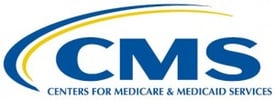 The Hospital Value-Based Purchasing (VBP) Program, established by the Affordable Care Act (ACA) in 2010, marks a dramatic shift in how hospitals are reimbursed by the Centers for Medicare and Medicaid Services (CMS). Under the Hospital VBP Program, U.S. hospital reimbursement dollars are based on quality of care and overall improvement, as opposed to simply the quantity of services provided.
The Hospital Value-Based Purchasing (VBP) Program, established by the Affordable Care Act (ACA) in 2010, marks a dramatic shift in how hospitals are reimbursed by the Centers for Medicare and Medicaid Services (CMS). Under the Hospital VBP Program, U.S. hospital reimbursement dollars are based on quality of care and overall improvement, as opposed to simply the quantity of services provided.
Baseline assessments of each established performance measure gathered in 2009 and 2010 were used to measure performance improvement for FY 2013. Measurements from 2010 and 2011 establish the baseline for FY 2014, and so on. CMS representatives are looking for achievement, improvement, and consistency – each of which is measured and scored individually, and then combined to establish the hospital’s total score.
The primary measure is called the Patient Experience of Care Domain, which is measured by compiling all of the hospital’s HCAHPS scores for the given time period, and includes the following categories:
1) Nurse Communication
2) Doctor Communication
3) Hospital Staff Responsiveness
4) Pain Management
5) Medicine Communication
6) Hospital Cleanliness and Quietness
7) Discharge Information
8) Overall Hospital Rating
CMS calculates a hospital’s Total Performance Score by:
1) Combining the greater of either the hospital’s Achievement or Improvement points for each measure to determine a score for each domain;
2) Then multiplying each domain score by a specific “weight” (percentage); and,
3) Then adding together the weighted domain scores.
For more information, download this CMS Hospital VBP Guide.
Communication, effectiveness, and efficiency are all factored in to the assessment of each hospital’s performance, and process breakdowns, bottlenecks, and inefficient communication can significantly impact reimbursement rates.
The Hospital VBP Program is funded by a percentage withheld from participating hospitals’ Diagnosis-Related Group (DRG) payments. In 2014, the total amount that can be withheld is capped at 1.25%. This percentage is variable, and will increase incrementally through 2017. From 2017 on, the withholding amount will be capped at 2%.
In order to maximize CMS reimbursements, hospitals must not only perform, they must continue to drive improvement. Tools like BedWatch Admit Control, Bed Control, and Transport Control help hospital leaders harness important throughput data in order to track performance and identify areas needing improvement. By better understanding day-to-day throughput operations, hospital leaders can better manage patient flow, increase the efficiency of communication, minimize time-consuming clinical administrative tasks, and reduce patient wait times.
Even small improvements in hospital performance can have a big impact on CMS reimbursement rates. Contact us today to discuss how the BedWatch suite of throughput management tools can help your hospital drive improvement across VBP measures.



